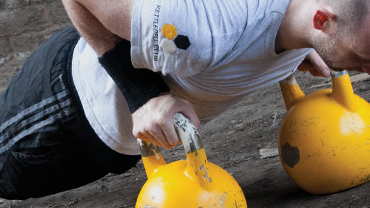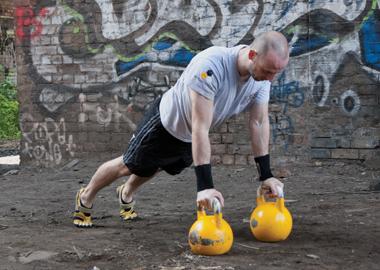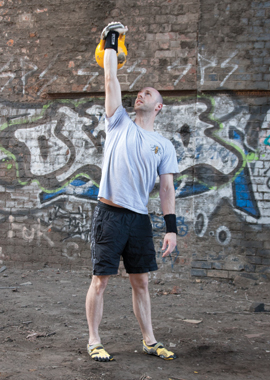Mission Slimpossible Workout
Intermediate / Advanced Level
Mission Slimpossible is potentially a long workout. By the end of the workout you would have completed a total of 500 reps. The workout contains five kettlebell exercises, where you will be performing 10 reps on each one. Make sure you warm-up fully before proceeding with this workout.
INstruction
10 Rounds
One Hand Swings x 10 reps (each side)
Goblet Squats x 10 reps
Push-Ups x 10 reps
Windmill x 10 reps (each side)
Double Crunches x 10 reps
This workout is against the clock. You have to complete 10 rounds of all 5 kettlebell exercises. On each exercise you need to perform 10 reps. On the One Hand Swings and the Windmill you will be performing 10 reps on each side, before you move onto the next exercise. Don’t set off to quick as you will pay for too fast a pace towards the end. Try to maintain a steady pace all the way through, and make sure you maintain good technique all the way through. Don’t take too long transitioning from one exercise to the other, move swiftly, but rest as and when you need to.
















